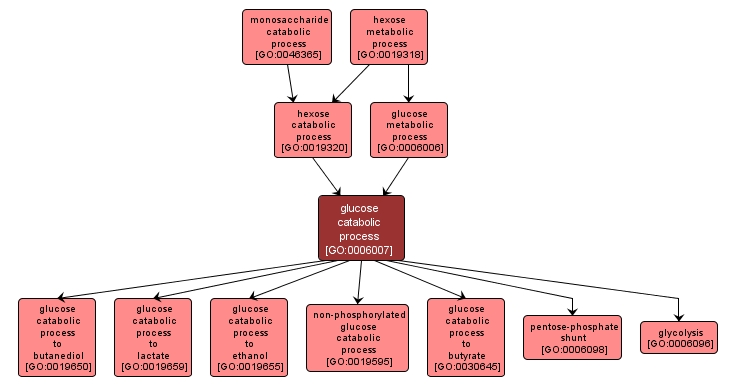GO TERM SUMMARY
|
| Name: |
glucose catabolic process |
| Acc: |
GO:0006007 |
| Aspect: |
Biological Process |
| Desc: |
The chemical reactions and pathways resulting in the breakdown of glucose, the aldohexose gluco-hexose. |
Synonyms:
- glucose breakdown
- glucose catabolism
- glucose degradation
|
|

|
INTERACTIVE GO GRAPH
|














